The Spirit of Competition and the Birth of the Most Popular Sporting Events as Seen Through Greek Culture and Objects
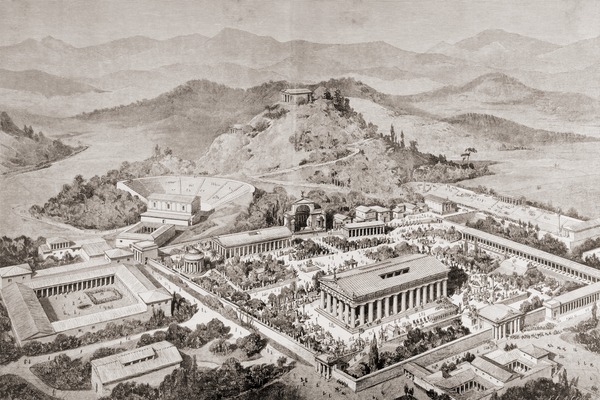
The year is 776 BCE and Coroebus, the local cook, is lined up at the starting line. Men from all over Greece are lined beside him, covered in olive oil and digging their toes into the stones starting plates as the crowds roar in the stadium. The Hellanodikai (the judges) call for the beginning of the race and the men are off, wasting no time as they dash through the 600 olympic feet of the course (called the stade – the root to the name of the stadium). Not separated by age, height, ability – they race to be the best among themselves. Barely a minute passes and to the excitement of the audience, Coroebus crosses the finish line and is crowned the first olympic champion in the first accurate ancient greek chronology. The four years (called an olympiad) before the next olympic games are named in Coroebus’s honour while an olive wreath is given to him to bring triumphantly home to his town and live out the rest of his days as a demi god with pride and free meals.
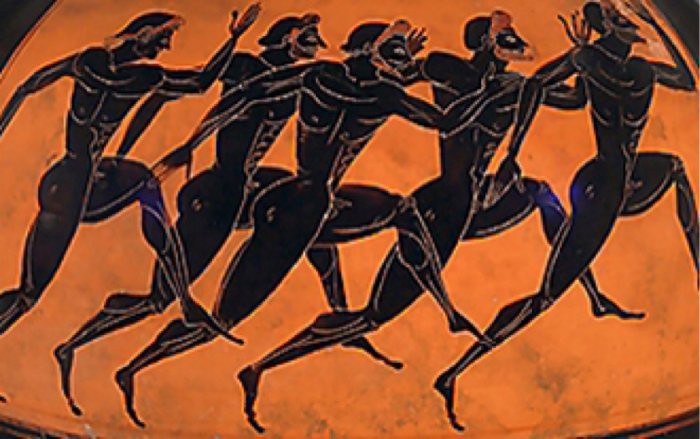
https://medium.com/@shotarohondamoore/history-of-the-ancient-olympic-games-cabaebfd1b0a
Though this is the first recorded olympic games, the olympics themselves had been occurring for many years, rumoured to have been started by Hercules himself, the son of Zeus. The games were a unique blend of sporting and religion as the entire festival was devoted to the god Zeus who would have the events in his honour and hundreds of cows burned for him at the end of the spectacle. Over the years more events were added to the games and the popularity of the festival grew. Soon athletes would travel to work with physical trainers in Olympia a month before the event while swaths of spectators started their journey to watch the festival take place. So great was the greek love of the Olympics an their athletes that all war stopped for it. In the pan-hellenic truce (Pan meaning “all”, and hellenic meaning “greek”) no warring was allowed, no weapons could carried into the olympic city and all cities must allow for any spectator, athlete or theoriai (the city representative) to travel freely between their borders to attend the games.

This brought unity and peace to Greece; it was an opportunity for city leaders to come together and have important discussions about political and economic warfares and make connections to be able to work together. In the future, this was seen in action as all the greek city states agreed to help each other defend against the invading Persian army. They put together an allied army but had trouble finding enough soldiers as so many people wanted to attend the olympics! The greek people delayed putting together an army and defending against an impending enemy to watch running races in Olympia! Understandable.
During the games, food vendors, craftsmen, musicians, poets, artists and philosophers would take advantage of the crowds to sell their work or spread new ideas. This greatly expanded the greek culture, making it one of educated people, artists and athletes – a superpower of its time. The olympic culture was so respected within Greece that full wars stopped, new festivals emerged, new art was created and the ideas of sporting, healthy living and competitive energy became the foundation of greek education.
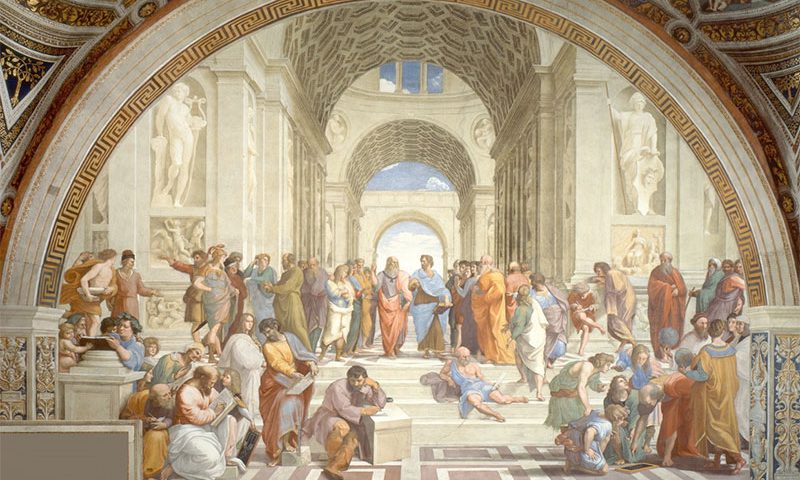
https://ioa.org.gr/the-spirit-of-ancient-greece/
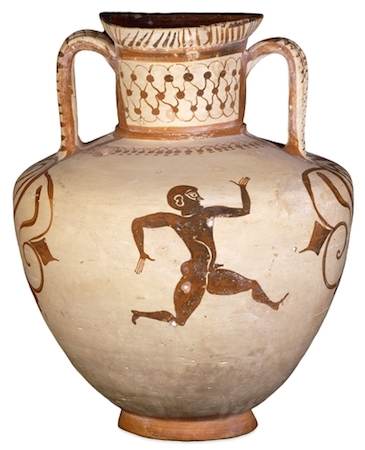
This vase is a testament to the oldest and most respected event – the running race (equivalent to the two-hundred meter sprint). Made of clay and natural pigment, this silhouette of a man with only a few inner markings poses with his arms and legs bent and agile, his chest puffed out to suggest he is running at full speed. This pose transcends time and is seen again in Mario and Luigis famous pose and my iconic halloween costume
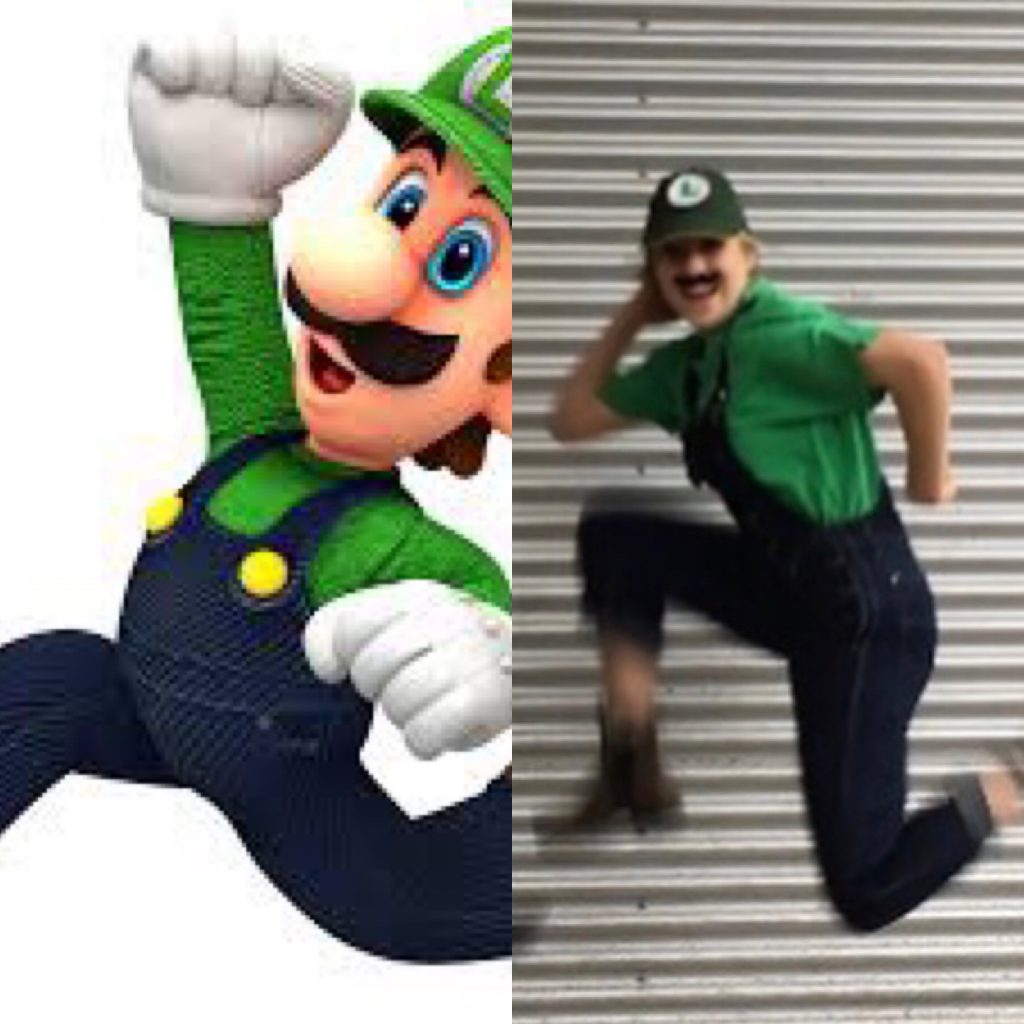
two years ago. In most cases of a vase like this, done in the Fikellura style, there would have been more decoration of panels and delicate flowers but the artist left it a little more open making this piece a standout of its time. Vases were a mirror of the history and culture of the days they were made in. They were the precursor to later Greek art that can only be fully understood with help from this period of variety, experiment and of course competition.
Citations
- Ancient Greek Olympics. (2014). In INTELECOM Intelligent Telecommunications (Ed.), National geographic video collection. INTELECOM Learning. Credo Reference: https://ezproxy.capilanou.ca/login?url=https://search.credoreference.com/content/entry/intelecomng/ancient_greek_olympics/0?institutionId=6884
- https://www.history.com/topics/sports/olympic-games
- https://www.ushistory.org/civ/5h.asp
- http://www.olympicartifacts.com/the-ancient-olympic-games/
October 7, 2020 at 2:52 pm
Sorry that this is uploaded a little late, I was having some technical difficulties last week and didn’t notice that it didn’t publish! Here it is now